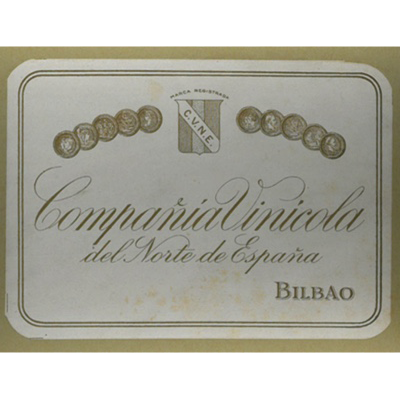by Wine Owners
Posted on 2018-05-30
[Last week, the Wine Owners team tripped along to Lords, to taste a range of top 2017 Bordeaux wines en primeur. Below is a contribution from Artemis, the newest member of the team...]
What could be been better for a mid-May Thursday than a large tasting of Bordeaux Grand Crus at Lords Cricket Ground?!
The tasting included wines from over fifty chateaux, each bringing two vintages: 2017 and one other back vintage. Determined buyers and tasters were able to get around the whole room, while others focused on either the left bank or right bank, or maybe their favourite producers. Here are some great value attention-catchers.
Delicious Fruit
Some wines with very good fruit expression, and also notable for their value, were La Tour de Mons and Meyney. The tasting duos were 2014 & 2017 for La Tour de Mons and for 2015 & 2017 Meyney. These are an absolute recommendation especially if you have now started working on your cellar.
- La Tour de Mons 2017: £164
- Meyney 2017: £228
- La Tour de Mons 2014: £190
- Meyney 2015: £295
On the same spectrum at a nearby stand were Lafon Rochet and Cos Labory with their tasting pairs. Both of these wines offer very good fruit and ageing potential, Lafon with a rounder mouthfeel and Labory with a spicier finish.
- Lafon Rochet 2017: tbc
- Cos Labory 2017: tbc
- Lafon Rochet 2014: £285
- Cos Labory 2011: £240
Fresher Styles
In the photo here are Chateau Pibran on the tasting table, next to d’Aiguilhe. Both of these will please those who enjoy fresher Bordeaux expressions with texture and minerality. Pibran is handled in the same facilities as Pichon Baron, and can be a nice addition for a diverse wine portfolio.
- Pibran 2017: £280
- d’Aiguilhe 2017: £180
- Pibran 2014: £225
- d’Aiguilhe 2014: £150
Similarly, d’Aiguilhe was tasted next to its big brother, Canon La Gaffeliere (Saint-Emilion Premier Grand Cru Classe B). This Cotes de Bordeaux wine retains freshness and is a very good introduction to the wines of the Von Neipperg vineyards.
White & Sweet Surprises
En Primeur tasting means racing tannins, so a break was required from the full-bodied reds, to explore sweet and dry whites. Dry, old-vine Semillon-dominated, 'S de Suduiraut' from the eponymous chateau offers concentrated flavours, along with substantial freshness and minerality. Luscious Clos Haut-Peyraguey 2014 & 2017 from Bernard Magrez was the perfect way to close the tasting, after a mouth watering duo of Pape Clement Blanc (2006 & 2017).
- S de Suduiraut 2006: £230
- Clos Haut-Peyraguey 2017: £290
- Clos Haut-Peyraguey 2014: £350
by Wine Owners
Posted on 2018-05-17
An overlooked example of value for money here from the 100 point La Mission 2005. Compared to Domaine Clarence Dillon stablemate Haut-Brion, and the rest of the 2005 First Growths, 2005 La Mission is a clear winner in terms of value as is eminently clear from relative value analysis. The only other 100 point wine on the whole left bank is Haut-Brion, which trades at around £6,500. The other Mouton will cost £5,250, Latour £6,600, and Margaux £6,100, all on 98 points, while Lafite lags behind them all in relative terms, commanding £7,700 for 96 points.
Compared to other 100 point La Missions over the year, the 2005 wins out on relative value as well. Whether any of the 2009, 2005 and 2000 will hit the price highs of the legendary 1989 is a subject on which the verdict is very much out, and will depend on how reputation of the vintages develops. Nevertheless, all three look like relatively sound buys, and the 2005 at the offer price just beats the rest (assuming they can be bought at market level).
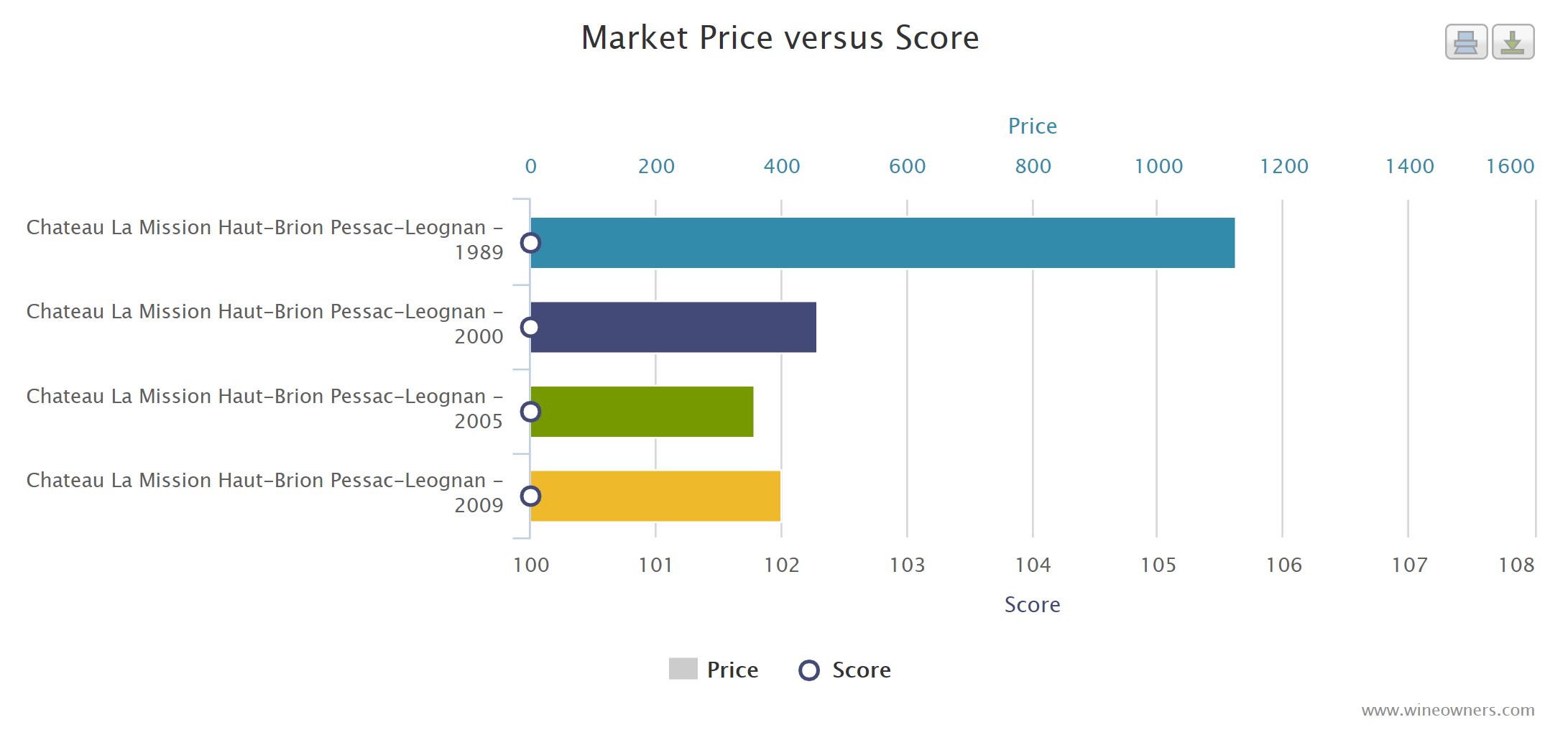
“The 2005 La Mission Haut-Brion is pure perfection. It has an absolutely extraordinary nose of sweet blackberries, cassis and spring flowers with some underlying minerality, a full-bodied mouthfeel, gorgeously velvety tannins (which is unusual in this vintage) and a long, textured, multi-layered finish that must last 50+ seconds. This is a fabulous wine and a great effort from this hallowed terroir. Drink this modern-day legend over the next 30+ years. Only 5,500 cases were produced of this blend of 69% Merlot, 30% Cabernet Sauvignon and 1% Cabernet Franc.”
100 points, Robert Parker
La Mission Haut-Brion 2005 is offered £4,300 on the Wine Owners Exchange (£4,435 including fees)
by Wine Owners
Posted on 2018-05-09
'Passion Asset' is a phrase of two halves. Alongside all the asset-focused work we do here at Wine Owners, we try to indulge the passion-focused bit too. Jonathan Reeve returned today from five busy days touring and tasting around eastern Sicily. Below is a summary of the trip, and five suggestions for Sicilian wines worth adding to your cellar (with a 5 – 10 year drinking window).
Erupting with Pride
Sicily has confidently reinvented itself in the past fifteen years, and is clearly proud of its achievements. Bulk blending wines have now been moved firmly to the background, and the island’s wineries are focusing their attention (and ours) firmly on quality wines and regional styles. Nowhere is the pride more obvious than around Etna. It seems so overt there that it borders on a sense of superiority, forgivable only because of the wines’ clear quality and First floors’ lofty perspective over the rest of the island. Etna remains the island's flagbearer, its wines a clear step or two ahead of the other regions in the charge towards quality and international recognition. Etna wines are blessed with pure fruit flavours, stunning ruby-like colouring, and the excellent acidity which is a signature of volcanic soils.
Wild and high atop Etna, Cornelissen’s volcanic ‘Magma’ Vineyard (900m)
©Jonathan Reeve
There is a sense of competition on Etna, with a handful of the top wineries quietly jockeying for the very top spot. Happily, their stylistic differences mean there is room at the top for them all; elegant Benanti, classic Graci, pure Torre Mora, bold Terre Nere, natural Cornelissen. We spent three days around Etna, mostly around the northern side where the best (blackest) terroir is to be found. One sunny afternoon we sampled the various and varied crus of Frank Cornellissen (whose ‘Munjebel CS’ shows just how Burgundy-like Etna wines can be, but whose wines have not yet proved themselves cellar-worthy), and those of the Tenuta delle Terre Nere (whose sexy Santo Spirito features among my suggested purchases below).
Among our gracious hosts during the visit was Antonio Benanti, who spent four full hours guiding us around his vineyards and wines. The quality and ageing potential of Benanti's Etna wines was abundantly clear, as was his focused, classic winemaking style.

A classic Rovittello label; Benanti before it was ‘Benanti’
©Jonathan Reeve
The stand-out wine from Benanti's range was the Etna Rosso from his vineyard in Rovittello. Rovittello is clearly a village to watch; Torre Mora's vineyard and winery is also there, and the high quality of their Etna Rosso from 2015 and 2016 was undeniable. The little-known Torre Mora estate was acquired in 2016 by Tenute Piccini of Tuscany, and given a very classy upgrade. Viticulture and winemaking have both been overhauled, with clear results, and the wine style brought up-to-date to a fresher, vibrant, more-classic wine style. Complimenti Piccini.
,
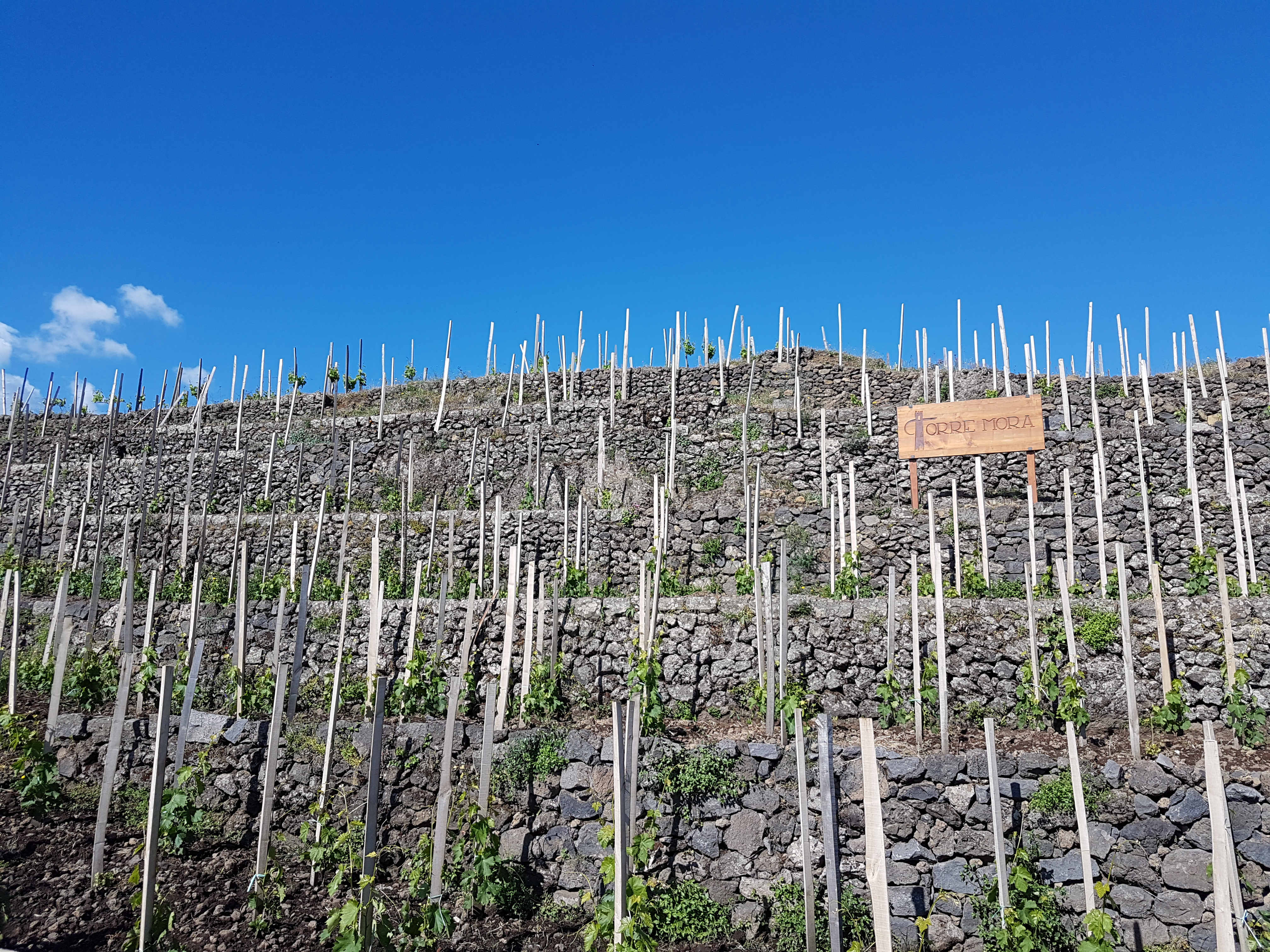
Rejuvenated: Tenuta Torre Mora, Rovittello
©Jonathan Reeve
No Wine Is an Island
Sicily has a broad range of wine styles – and more importantly clear distinctions between those styles. Also vital is that these styles work together; they complement one another, rather than competing. Fresh, crisp, elegant Etna Bianco is clearly distinct from broader-styled Inzolia-Chardonnay IGT blends and citrus-tropical Cattarratto varietals. Taut, bright, ruby-like Etna Rosso is a world apart from the dark, plummy Nero d'Avolas made in the island’s south-eastern corner, and another world again from the juicy, mouthwatering Cerasuolos from Vittoria (these combine Nero d'Avola's brooding depths with Frappato's ripe-strawberry brightness). Add to this core the island’s traditional trademarks – fortified Marsala and sweet Muscats from Pantelleria and Noto – and you have crystal-clear stylistic diversity that any region would be proud of. The wildcards in the pack were the handful of dry Moscato wines we tried. These were an unexpected surprise –refreshing in every regard. First was Planeta’s super-refreshing, aromatic Allemanda, and then COS’ amphora wine Zibbibo-in-Pithos, which calls to mind orange blossom and Earl Grey tea.
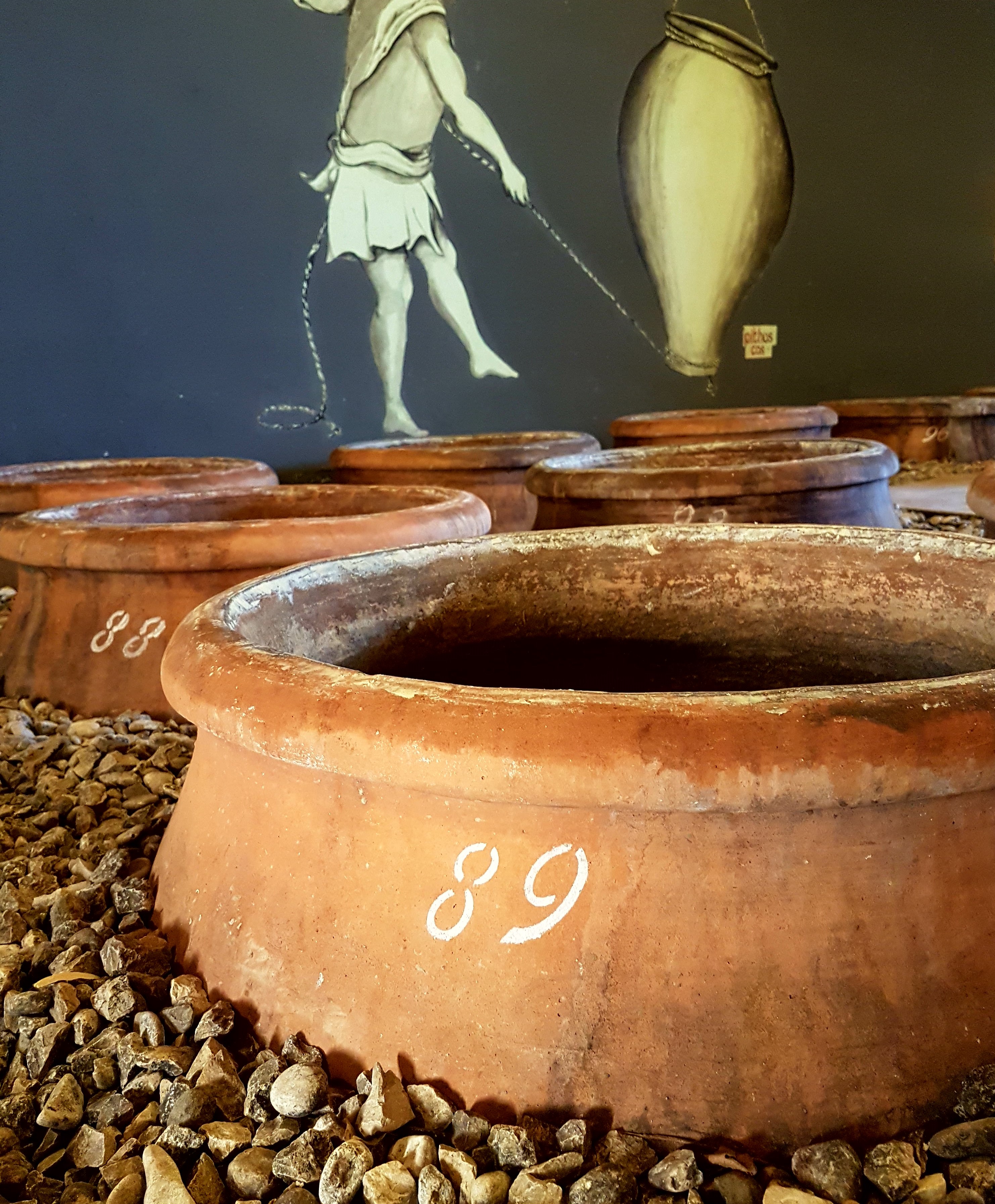
Amphorae at COS. Definitely not jug wine.
©Jonathan Reeve
Sicilians Don't Shrug
Marketing is key to Sicily's new look, and the island is doing it with flair. The island is more than just 'shrugging off' its old reputation. Those shoulders are shimmying with Mediterranean style, brilliantly exemplified by Donnafugata’s colourful labels. A visit to a Sicilian wine shop is like a visit to an art gallery. Many of the top wineries are hot on hospitality, too, with comprehensive tours and tastings available, and an increasing number offering accommodation (we stayed for two nights at a chic farmstay owned by the Occhipinti family). Planeta stood out on the hospitality front; our morning visit to their Buonivini estate was guided with expertise and generosity. We specifically requested to taste a few back-vintages of Cerasuolo di Vittoria and reds from Noto, to assess their cellaring potential. A cluster of wines from 2005 to 2015 soon appeared, and confirmed that top-level wines from both of these DOCs are indeed capable of developing for over a decade. One clear pattern was that the aromas and palate take on lives quite distinct from one another over the years; the 2005 Santa Cecilia Noto had a savoury nose of black olives and herbs, but retained noticeable fruity flavours on the palate. The lifespan of Sicilian wines will almost certainly increase in the coming years, as Sicily’s new generation of quality-focused winemakers continues to find its groove. This does beg one question, though…will the lively, soulful marketing and label designs disappear once the wines get more serious? Let’s hope not.
Five Sicilian Wines Worthy of Your Cellar
- Planeta Dorilli Cerasuolo di Vittoria Classico 2015
Drink 2018 – 2023
See Wine-Searcher
- Cos Cerasuolo di Vittoria Classico 2013
Drink 2018 – 2023
See Wine-Searcher
- Benanti Pietramarina Bianco 2016
Drink 2019 – 2029
Contact Benanti and tell them I sent you: info@benanti.it
- Torre Mora Etna Rosso 2015
Drink 2019 – 2025
Not yet released. Contact: info@tenutepiccini.it
- Terre Nerre Santo Spiritu 2015
Drink 2019 –2025
See Wine-Searcher
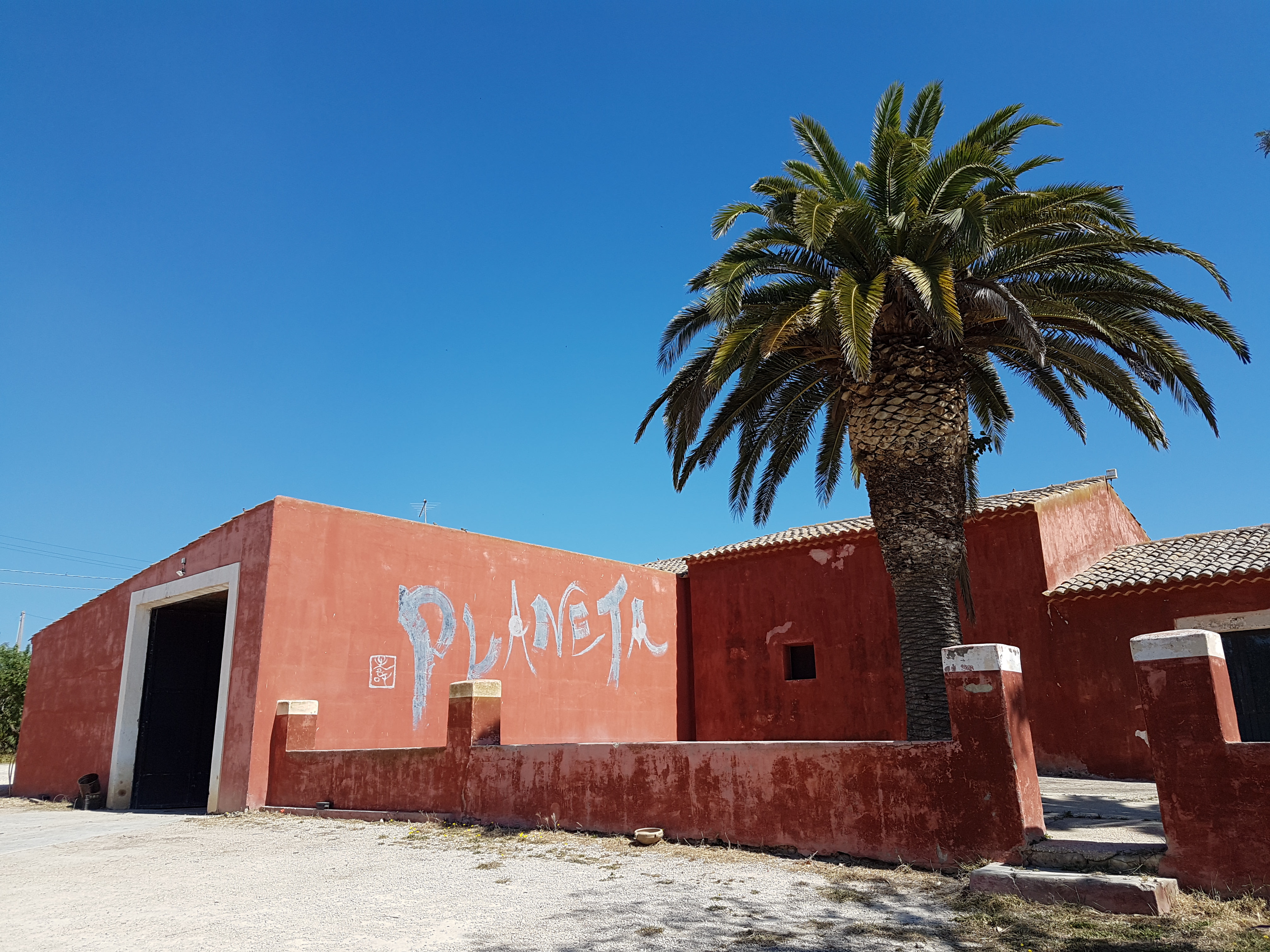
Planeta Buonivini Estate, Noto
©Jonathan Reeve
by Wine Owners
Posted on 2018-05-08
4 things to remember:
1. An attractive vintage for second wines (if the prices come down and producers avoid ‘repositioning’)
2. A truly great vintage for dry whites
3. Finally, a broad-based success in St. Emilion!
4. Best wines flow like a river…
2017 can’t be summarised at the commune level. There were notable successes everywhere. But those that were successful had a harmonious, infused, flowing texture to the wines.
The best are the antithesis of shouty wines, and if they were clotheshorses they definitely wouldn't wear shoulder pads. These are quieter, understated types that’ll turn around in a decade’s time, smile enigmatically and sotto voce say “I told you so’.
Economics to consider:
With few exceptions, this is not a red vintage where prices are likely to increase over the next 2 years. Several people have referred to 2007 as a modern day 1988. Prices of 1988 stagnated for several years after release. Not because it wasn’t an appreciated vintage at the time, but because it wasn’t a ‘great’ vintage, and got rather overshadowed by the ensuing duo of 1989 and 1990.
There are a few Chateaux which are increasingly sought after and will sell out, and those wines will probably be worth buying at first release. Subject to the all important caveat of price permitting.
For UK buyers, as at May 2018, sterling has sagged, and is close to historic lows against the Euro. In a year or two the picture could look very different depending on the nature of a EU settlement. The currency swing could be 20%. That is a major disincentive for UK buyers to buy 2017s during en primeur.
The same currency concern was of course present through the 2016 campaign, but the difference is that 2016 was evidently an extraordinary vintage from the get-go, and recent re-tastings confirm its potential greatness. The majority of brilliant vintages are expensive at first release, as was 2016.
Most good vintages that follow great ones, where prices don’t fall far enough from the heights of its precursor, suffer price stagnation for a long time: think 2006. In my view 2017 is not too dissimilar to 2006 in its vintage profile, certainly is not obviously better, and has a further parallel with 2006 in that it follows a great vintage (2016).
Target release prices
See our recent analysis of proto-prices – the level that we believe Chateaux will have to come down to in order for 2017 reds to find a market. On average we believe they will need to reduce release prices by -24%. Some wines would theoretically need to come down by as much as -40% whilst others may not need to reduce their release price at all (notably the dry whites).
We recommend you don’t get too fixated on that average figure of -24% but think in terms of a scale of 0% to -40%.
As an example, it’s worth remembering that Vieux Chateau Certan made a great wine in 2011 that vies for greatness with 2009 and 2010, yet a price reduction of -40% for the 2011 release wasn’t enough to stop it falling by another -25% before it recovered and started putting on gains versis its release price.
Admittedly the 2011 coincided with the Bordeaux market crash of 2012-2014, but even so, it’s a reminder of how even seemingly significant price reductions can still be insufficient reason to buy during en primeur.
©Jonathan Reeve / Wine Owners
1. A vintage for second wines
Look at the quality of the second wines this vintage. Chateaux have been upping the ante over the last few years and there are some profoundly satisfying results.
The thing that stood out in respect of these second wines is the refinement of their tannins; something you used to see only in the Grand Vin. It means that many second wines are now worthy competitors to many classified growths.
All of the following merit scores of around 92-93.
Petit Mouton
Red fruited nose, great intensity and aromatics, super lift and energy and a long, vinous finish.
Le Marquis de Calon Ségur
Fresh, and with a tension that leads to a very fruity core of sweet raspberry coulis. There’s a notable purity to the mid palate, medium weight and a charming savoury finish.
Dame de Montrose
Saline nose, touch of cedar, then sweet pastille fruit, an elegant attack, red fruits and ultrafine tannins. A lifted, fresh, well defined finish that ends with a dab of clove oil.
Pavillon Rouge
Liqueur-like nose, great energy in the attack, with a suave mid palate. Superbly classic, dry character and a fine-grained textured feel to the tannins.
Petit Cheval
Pure nose of red fruits and kirsch, perfumed. Silky feel, cloves on the attack, mid weight, sweet mid palate, fine tannins, evidently structured towards the back of the palate, fresh with a touch of game-bird. Very structured finish: old school and impressive, with a tremendous mouth-watering finale.
Clarence de Haut Brion
Deep nose, saline with liquorice and cedar. Real complexity. Bright attack, creamy red and black fruits, and with drive to a medium long finish.
©Jonathan Reeve / Wine Owners
2. A great vintage for dry whites
With greater focus and freshness than 2015, and much greater intensity and drive than 2016; 2017 is one of the most exciting white wine vintages for years.
Bordeaux white may not have the caché of Burgundy, but occasionally a vintage comes along that is an inimitable and compelling expression of Sauvignon Blanc and Semillon.
That perfect expression should show great minerality (or stoniness), floral aromatics (choisya, elderflower, white jasmine) have bright intense citrus character, and may have background hints of soft fruits in the spectrum of peach, passion fruit and guava.
Great Bordeaux whites need to show purity, vibrancy, and length. The tropical fruited expression should be subtle, nuanced; a suggestion rather than an emphatic flavour.
Whilst Bordeaux whites don’t have a secondary market like the reds do, the quantities produced are relatively confidentielles so may not be easy to obtain in the future, or the blue chip examples may appreciate in value within the couple of years or so after the wines are bottled.
Superb whites (at a variety of price points) were made in the vintage at the following properties:
Haut Brion Blanc
Cool nose of stone fruits, pomelos, a dollop of cream. Burgundian in weight with a sense of scale/ broad dimensions. Huge freshness too. Pithy, firm, lemons and blood oranges with simply huge minerality. This wine represents the great heights white Bordeaux can sometimes achieve.
98+
Pavillon Blanc
Saline, creamy nose. Superb breadth and pithiness, spice and a salty, mineral finish that goes on and on.
95
Les Hauts de Smith Haut Lafitte Blanc
100% Sauvignon. In a word, terrific value! Refined nose, a little bit mute - but fair enough at this stage of its evolution. Energetic attack, great freshness and confit lemon mid palate accompanied by high notes of grapefruit.
92
Smith Haut Lafitte Blanc
An expressive nose in contrast, great intensity evident, then grapefruit and pomelos, and a fine line in mouth watering acidity. Bright powerful citrus character. Precise, pithy and long. Weight and intensity on the finish with background notes of guava.
96
Pape Clément Blanc
Grapefruit and pronounced kaffir leaf nose, intense and limey. Gorgeous attack of pomelos, sherbet, pith, candied lemons. Mandarine infuses the mid palate. Superb.
96
Malartic Lagraviere Blanc
Orange blossom nose, wild heather, with a mineral and herby attack (lemon thyme?). Just a hint of underlying sweetness. Harmonious. Confit lemon on the finish.
95
La Louviere Blanc (Good value)
Pithy nose, Seville orange and pomelos. Very good balance and purity on the mid palate, with good restraint, length and an attractive focused finish.
92
Chevalier Blanc
A floral nose; very interesting and a bit different to most other aromas in this vintage. Gorgeous attack of sherbet, mid palate dominated by grapefruit pith, accompanied by super acidity and attractive length.
94
La Tour Martillac Blanc
Grapefruit and kaffir leaves on the nose with a bright really intense attack. Fine mid palate, quite big scaled, but with tons of acidity to back it up. I’d nevertheless have liked a touch more restraint to focus the finish that ends broad. Maybe it just needs to settle down.
91+
Carbonnieux Blanc
Pithy nose, followed by a sherbetty attack. A little less pure in the mid palate than anticipated by the sparkling intro, although the finish is fine and nicely lifted, creating a pleasing finale.
90
©Nick Martin / Wine Owners
3. Broad-based success in St Emilion!
Not for some years have there been so few high alcohol monsters produced in St Emilion, and correspondingly so many balanced, attractive wines. St Emilion was a minor revelation.
L’If
Vinous, fruity nose. Dark fruit in the spectrum of mulberries on the attack. Grainy mid palate, fine tannins, crunchy fruit, a dab of clove oil, liquorice, all delivered with persistent, notable freshness.
93
Angelus
Refined nose, very progressive fruit. Really fine tannins underlie a silky texture. And it's drier than usual, not as sweet or as obviously powerful as before, yet still is large-scaled in the best sense of the term – and is all the better (and classier) for it. The first Angelus I have absolutely adored in a very long time.
96
Canon La Gaffeliere
Expressive kirsch nose, touch of pepper, crystalline fresh attack, creamy red fruits, some plushness in the mid-palate, yet without excess sweetness. Nice progression and finish, with good sucrosité throughout.
92+
Soutard (Good value)
Liqueur and peppered nose, svelte texture. Very attractive griottes on the mid palate, super spiced, clove oil. Sappy, mouthwatering, extremely moreish and fresh. Will be great value mid-term drinking and with the zip to peak in 12-15 years.
90% Merlot with the remaining 10% a mix of Cab Franc, Cab Sauv and Malbec. Yes, Malbec!
93+
Troplong Mondot
Richly perfumed nose, in the aromatic wood spectrum. Very ecclesiastical. Quite big attack with a liqueur-textured quality, cloves coating the mid palate and a bright controlled finish. Fine and exciting to taste.
96
Canon
Sweet fruited nose. Super attack. Great balance, poised, fine grained tannins, and sappy, moreish fruit. Fruit pastille but not in the slightest bit overt, and a silky smooth delivery. It’s almost lush, almost sweet, yet in fact it’s quite firm, with liquorice notes and light spice. Good length. Will be very popular.
95+
Berliquet (good value)
Fruity nose with a touch of pepper. Powerful attack and a subtle mid palate. Flowing fruit and lots of energy with just a hint of firmness towards the back palate, but no dryness. Savoury and liquorice notes are introduced in the finish.
91+
Figeac
Raspberries on the expressive nose, with cedar notes. Liqueur-like texture, and an orange and raspberry infused attack. A vein of dry graphite runs through the fresh, racy, rich mid palate of pastille fruit, ahead of a firm finish. Once again rather lovely, if not delivering the sheer excitement of 2016, or the exuberance of 2015.
95+
©Nick Martin / Wine Owners
4. Harmony and substance.
The nature of the 2017 red vintage is one that wants to express itself without excess: in respect of weight, tannic structure and alcohol.
There is a classically dry character to the red wines. All of which speaks to the Atlantic, maritime pattern of the summer weather, and is also perhaps partly due to the very welcome trend back towards gentler extractions across Bordeaux.
2017 can’t be summarised at the commune level. There were notable successes everywhere. But those that were most successful had a harmonious, infused fruitiness, flowing texture to the wines.
The best are the antithesis of shouty wines, and if they were clotheshorses they wouldn't be seen dead in shoulder pads. These are quieter, understated types that’ll turn around in a decade’s time, smile enigmatically and sotto voce say “I told you so’.
Those that hit the mark included the following, with personal favourites scored excluding any of the wines aforementioned:
Calon-Ségur
|
97
|
Montrose
|
95
|
Ormes de Pez
|
91
|
Cos Labory
|
90+
|
Lafite
|
97
|
Mouton
|
97+
|
Cos d’Estournel
|
94
|
Latour
|
98
|
Pontet Canet
|
93
|
Lynch Bages
|
93
|
Grand Puy Lacoste
|
93
|
Haut Bages Liberal
|
93 (Good value)
|
Pedesclaux
|
93
|
Leoville Barton
|
95
|
Gruaud Larose
|
93
|
Branaire
|
92
|
Lagrange
|
93+
|
Talbot
|
92+
|
Margaux
|
96
|
Palmer
|
96
|
Rauzan Ségla
|
93
|
Cantenac Brown
|
92
|
Vieux Chateaux Certan
|
98
|
Le Pin
|
96+
|
Croix de Gay
|
93
|
Rouget
|
94
|
Gazin
|
94
|
Mission Haut Brion
|
96
|
Carmes Haut Brion
|
94+
|
Chevalier
|
93+
|
Smith Haut Lafitte
|
94+
|
Malartic Lagraviere
|
93
|
Olivier
|
93 (Good value)
|
by Wine Owners
Posted on 2018-05-04
by Wine Owners
Posted on 2018-05-04
by Wine Owners
Posted on 2018-05-02
There comes a moment in the evolution of every market where all the stars are aligned. Last week a bottle of CVNE Vina Real 1959 sold on an online auction for 905 euros.
One might well ask what this has to do with investing in (comparatively) young Rioja to make the best returns. What it confirmed to me was that the home market, Spain was back.
After several years in the doldrums the Spanish economy, at least for the wine drinking classes, was back on its feet.
What has also been noticeable is that recent releases have shown that wine makers felt able to increase prices by double figure percentages. Castillo Ygay for example has seen a 15% rise from the 2007 to the current release of 2009.
Other important factor is the considerable improvement in quality since 2001.
Wines that had consistently been receiving marks around the upper 80s and low 90s began receiving marks in the mid to upper 90s. I mention this not as a slavish follower of Parker; but as Maynard Keynes remarked investment is like a beauty contest where success is not necessarily about picking what one likes oneself but choosing what the crowd will like.
Secondly what is screamingly obvious is that Rioja is extraordinarily cheap in relation to French wines of a similar quality. Of course the market is much bigger, especially for Bordeaux, but like many markets the big returns come in the smaller markets. One only has to look at the Burgundy market over the past 20 years to see the truth in that.
Rioja prices have been suppressed by the fact that it is largely an internal market whereas Bordeaux is international.
Amongst specific choices Rioja Alta 904 and the even cheaper Vina Ardanza stand out as highly marked wines at very little purchase cost. Picking the best vintages of CVNE Imperial and Vina Real is also an inexpensive hobby. One only has to look back over recent vintages to see how rapidly all these rise in relation to their purchase cost over a 10 year period to see that returns of 200-300% are achievable. Given the Burgundy effect that could well prove very conservative…
My general advice is stick to the traditional names (making classically crafted wines) that are showing rising quality. Those in the know will note that I have not mentioned Lopez de Heridia: the reason for this most obvious of omissions is that I feel the market in their wines is so interesting as to be worth a further blog instalment.
Mike Armitage
Mike is a Wine Owners member and a long-term collector who started his cellar in the 1960s. Having witnessed the development of wine markets over the last 60 years, and a salesroom regular for several decades, Mike is well placed to spot opportunities.
